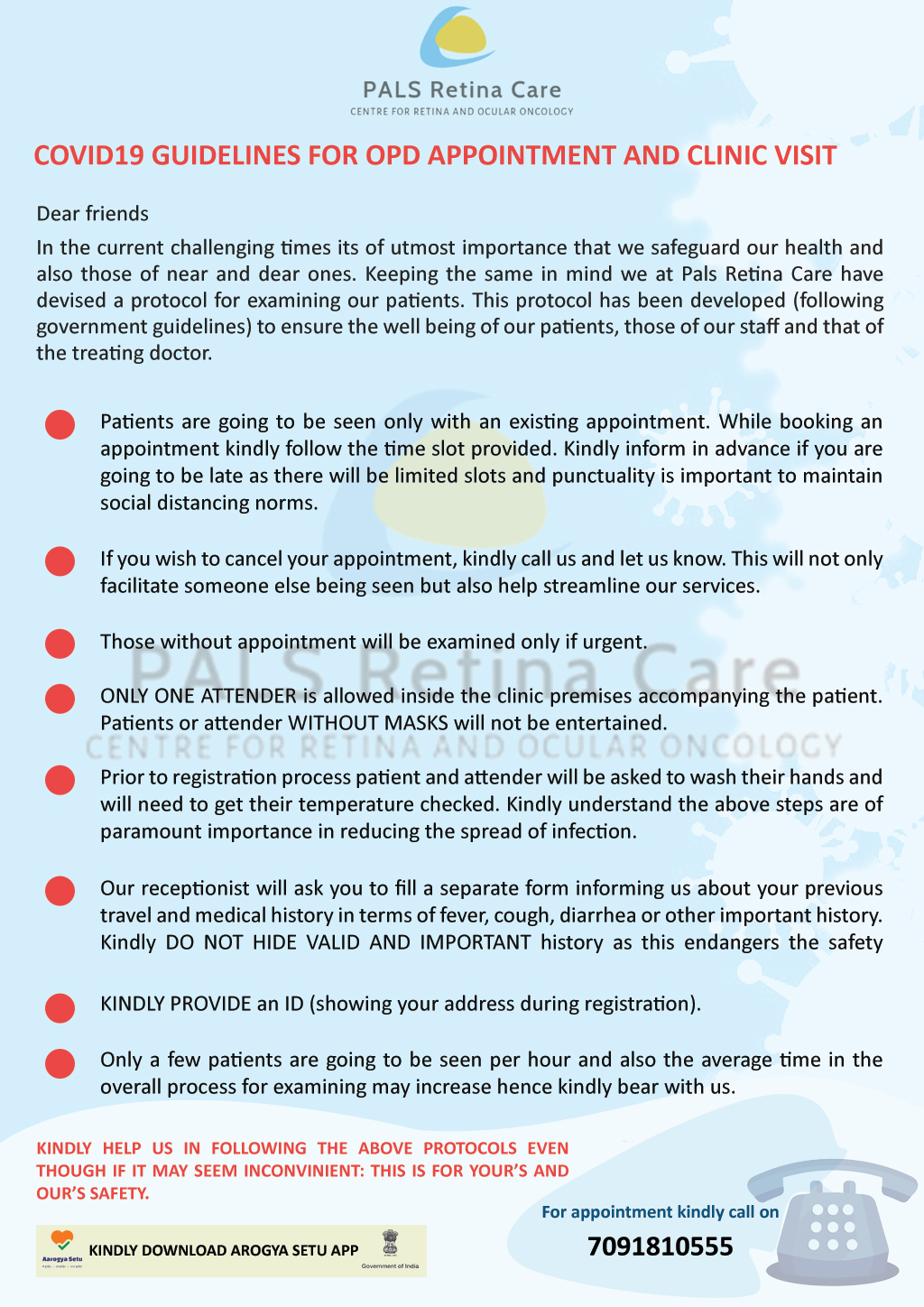Ideally every eye exam should also include a dilated eye examination. After the age of 40, yearly retinal exam is mandatory.
Following are patients who need a thorough retinal exam
- Those with diabetes( recently diagnosed and already on diabetic therapy)
- Those with high blood pressure, high cholesterol and heart( cardiac ) conditions
- Those with any other multiple systemic issues
- Those with high minus power( > -4)
- Those with history of retinal surgeries in family
- Those with eye injury( ball, shuttle cork and other forms)

